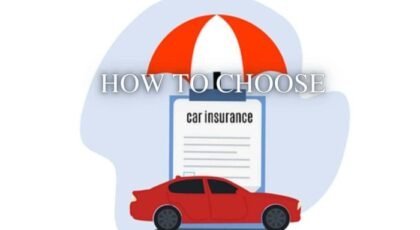The Best Car Insurance for Drivers With Bad Credit in America
The Best Car Insurance Companies for Drivers With Bad Credit in America: Finding affordable car insurance when you have less-than-perfect credit can feel like navigating a minefield. High premiums seem inevitable, but it’s not a hopeless situation. This guide explores how credit impacts your insurance rates, highlights companies that cater to drivers with bad credit, and offers strategies to improve your financial standing and lower your premiums.
We’ll cover everything from understanding your policy options to negotiating better rates, empowering you to find the best coverage without breaking the bank.
Many factors influence car insurance costs, and your credit score is a significant one. Insurers view a low credit score as an indicator of higher risk, leading to increased premiums. However, not all insurers weigh credit history equally; some prioritize driving records more heavily. This guide will help you understand how credit impacts your insurance, identify insurers who are more lenient, and discover practical steps to improve your credit score and, consequently, your insurance rates.
We’ll also cover essential aspects like understanding different policy types, comparing quotes effectively, and negotiating with insurance companies.
Table of Contents
ToggleTop Insurers Catering to Drivers with Less-Than-Perfect Credit
Finding affordable car insurance with bad credit can feel like navigating a minefield. Many insurance companies use credit scores as a factor in determining rates, leading to higher premiums for those with less-than-perfect credit. However, several insurers understand this challenge and offer specialized programs to make insurance more accessible. This section highlights three such companies and their approaches.
Insurers Specializing in High-Risk Drivers
Several insurance companies have developed strategies to accommodate drivers with bad credit. They recognize that a poor credit score doesn’t always equate to a poor driving record, and they aim to provide fair and competitive rates while mitigating their risk. This often involves a more rigorous underwriting process and potentially higher premiums compared to drivers with excellent credit.
However, it allows individuals who might otherwise be excluded from the market to secure necessary car insurance coverage.
Progressive, Nationwide, and State Farm: A Comparison
Progressive, Nationwide, and State Farm are three major insurers often cited for their willingness to work with drivers who have less-than-perfect credit. While their specific programs and pricing vary by state and individual circumstances, they generally offer a range of coverage options and strive to provide competitive rates, even for high-risk drivers. For instance, Progressive’s “Name Your Price® Tool” allows customers to input their budget and find a policy that fits, although the resulting coverage might be more limited than a more expensive plan.
Nationwide offers various discounts, including those for bundling insurance policies, which can help offset higher premiums associated with credit history. State Farm, known for its long-standing reputation, also uses credit scoring in its rate calculations, but their comprehensive coverage options and customer service are often highly regarded. Direct comparison of pricing is difficult without specific individual details like location, vehicle, and driving history, but generally, Nationwide and State Farm may be slightly more expensive than Progressive for drivers with bad credit, though this can vary widely.
Common Features in High-Risk Driver Policies
It’s important to understand that policies for high-risk drivers often include certain features. These features are designed to manage risk for the insurer and often mean slightly higher premiums or more stringent requirements.
- Higher Deductibles: Choosing a higher deductible reduces the premium, a common strategy for high-risk drivers seeking affordability.
- Limited Coverage Options: Some insurers may offer fewer coverage options or limit the maximum coverage amounts for high-risk drivers.
- More Frequent Reviews: Insurance companies may review policies more frequently to assess risk and adjust premiums accordingly.
- Specialized Programs: Many insurers offer specialized programs designed to help high-risk drivers improve their rates over time by demonstrating responsible driving habits.
- Usage-Based Insurance: Some insurers offer usage-based insurance programs that track driving behavior. Safe driving habits can lead to lower premiums.
Understanding Insurance Policies and Coverage Options
Choosing the right car insurance policy is crucial, especially for drivers with less-than-perfect credit. Understanding the different types of coverage available and their implications is key to making an informed decision that protects you financially in the event of an accident. This section will break down the essential components of a typical car insurance policy.
Types of Car Insurance Coverage
Car insurance policies typically include several types of coverage, each designed to protect you in different situations. The most common are liability, collision, and comprehensive coverage. Understanding the distinctions between these is vital for choosing a policy that adequately addresses your needs and risk profile.Liability coverage pays for damages or injuries you cause to others in an accident.
This is usually broken down into bodily injury liability and property damage liability. Bodily injury liability covers medical expenses and other damages for injuries you cause to others. Property damage liability covers the cost of repairing or replacing another person’s vehicle or property damaged in an accident you caused. The limits of your liability coverage are expressed as numbers, such as 25/50/25, meaning $25,000 per person for bodily injury, $50,000 total for bodily injury per accident, and $25,000 for property damage.Collision coverage pays for damage to your vehicle, regardless of who is at fault.
This means that even if you cause the accident, your collision coverage will help repair or replace your car. However, there is usually a deductible, which is the amount you pay out-of-pocket before your insurance kicks in.Comprehensive coverage protects your vehicle against damage from events other than collisions, such as theft, vandalism, fire, hail, or acts of nature.
Like collision coverage, it typically includes a deductible.
Importance of Uninsured/Underinsured Motorist Coverage
Uninsured/underinsured motorist (UM/UIM) coverage is particularly important for high-risk drivers, or those living in areas with a high number of uninsured drivers. This coverage protects you if you’re involved in an accident caused by an uninsured or underinsured driver. Without UM/UIM coverage, you would be responsible for your own medical bills and vehicle repairs, even if the accident wasn’t your fault.
Finding the best car insurance companies for drivers with bad credit can be tough, but it’s important to shop around. While factors like credit history heavily influence rates, remember that other factors matter too. For instance, young drivers with good grades often qualify for discounts, as detailed on this helpful resource about affordable auto insurance for young drivers with good grades.
Ultimately, securing affordable coverage, regardless of credit score, requires diligent comparison shopping and exploring all available options.
Given the increased likelihood of accidents for high-risk drivers, this protection is vital. For example, a driver with a poor driving record might find it more difficult to obtain affordable insurance, and this coverage can act as a safety net in case of an accident with an uninsured driver.
Common Policy Exclusions and Limitations
It’s crucial to understand that insurance policies are not all-encompassing. There are typically exclusions and limitations. For example, damage caused by wear and tear, or intentional acts are usually not covered. Furthermore, some policies may have limitations on the amount they will pay for certain types of damage or losses. For instance, there might be a limit on the rental car reimbursement provided after an accident.
Carefully reviewing the policy’s fine print is essential to understanding what is and isn’t covered.
Minimum Coverage vs. Comprehensive Coverage
The following chart Artikels the key differences between minimum coverage (often mandated by state law) and more comprehensive options:
| Feature | Minimum Coverage | Comprehensive Coverage |
|---|---|---|
| Liability | State-mandated minimums (vary by state) | Higher liability limits, offering greater protection |
| Collision | Typically not included | Covers damage to your vehicle in an accident, regardless of fault |
| Comprehensive | Typically not included | Covers damage from events other than collisions (theft, fire, etc.) |
| Uninsured/Underinsured Motorist | May or may not be included; often at minimum limits | Higher limits, providing better protection against uninsured drivers |
| Deductible | May apply to some coverages | Can be customized, but typically higher for more comprehensive policies |
Strategies for Improving Credit Score and Lowering Premiums

Source: bankrate.com
Improving your credit score can significantly reduce your car insurance premiums. Insurance companies view a higher credit score as an indicator of lower risk, leading to more favorable rates. This section Artikels effective strategies to boost your credit and, consequently, save money on your car insurance.
Effective Methods for Improving Credit Score
Improving your credit score takes time and consistent effort. It’s a gradual process, but with dedication, you can see positive changes within a few months. Key strategies involve addressing negative factors on your credit report and building positive credit history. This includes paying down debt, managing existing accounts responsibly, and monitoring your credit report regularly for errors.
Practical Tips for Managing Debt and Improving Financial Responsibility
Responsible debt management is crucial for improving your credit score. This means consistently making on-time payments on all your debts, including credit cards, loans, and mortgages. Creating a realistic budget and sticking to it helps prevent accumulating further debt. Consider exploring debt consolidation options to simplify payments and potentially lower interest rates. Regularly reviewing your credit report helps you identify and address any issues promptly.
Impact of Credit Score Improvement on Future Insurance Rates
As your credit score improves, you can expect to see a reduction in your car insurance premiums. Insurance companies use credit-based insurance scores to assess risk. A higher credit score signals lower risk to the insurer, leading to lower premiums. The exact amount of savings will vary depending on the insurer, your location, and other factors, but the potential savings can be substantial.
Hypothetical Improvement in Credit Score and Lower Insurance Costs
Let’s illustrate this with an example. Imagine Sarah, who has a credit score of 550 and pays $1500 annually for car insurance. After six months of diligent effort—paying down debt and consistently making on-time payments—her credit score increases to Many insurers offer tiered pricing based on credit scores. In Sarah’s case, this improvement could potentially lower her annual premium by 15-20%, resulting in savings of $225 to $300 per year.
Another example: John, with a score of 600, pays $1200 annually. Improving his score to 700 could potentially save him $180-$240 annually, depending on the insurer and their specific rating system. These are hypothetical examples, and actual savings may vary. However, they demonstrate the significant potential for cost reduction through credit score improvement.
Finding affordable car insurance with bad credit can be tough, but there are companies that specialize in this. To help you navigate the options and find the best rates, you might want to check out resources like AdminLurp , which could offer valuable insights into insurance comparisons. Ultimately, securing the best car insurance for your situation requires careful research and comparing quotes from several providers.
The Role of Driving History in Insurance Rates: The Best Car Insurance Companies For Drivers With Bad Credit In America
Your driving history is a significant factor in determining your car insurance premiums. Insurance companies use this information to assess your risk of being involved in an accident. A clean driving record generally translates to lower premiums, while a history of accidents or violations will likely lead to higher costs. This is because statistically, drivers with more infractions are more likely to file claims.
Past Driving Infractions and Premium Increases
Past driving infractions, such as accidents and traffic tickets, significantly impact your car insurance rates. Each incident is weighted differently depending on its severity. For example, a speeding ticket will generally result in a smaller premium increase compared to a DUI or an at-fault accident causing significant damage. The more serious the infraction, the greater the impact on your premiums.
Insurance companies consider the frequency of these incidents as well; multiple infractions within a short period will usually lead to a more substantial rate increase than isolated incidents. This is because repeated incidents suggest a higher likelihood of future claims.
Defensive Driving Courses and Their Impact
Completing a defensive driving course can positively influence your car insurance premiums. Many insurance companies offer discounts to drivers who complete an approved course. These courses aim to improve driving skills and knowledge of traffic laws, thus reducing the risk of accidents. By demonstrating a commitment to safer driving, you signal to insurers that you are a lower-risk driver, potentially resulting in lower premiums.
The specific discount offered varies by insurer and the type of course completed. It’s advisable to check with your insurer to see if they offer such a discount and what the requirements are.
Comparison of Different Driving Violations
Different types of driving violations carry varying weights when determining insurance premiums. Minor infractions, such as parking tickets, typically have little to no impact. However, more serious violations, such as speeding tickets (especially excessive speeding), reckless driving, or DUI/DWI convictions, will significantly increase your premiums. At-fault accidents, especially those resulting in significant property damage or injuries, often lead to the most substantial premium increases.
Some companies may even refuse to insure drivers with a history of serious violations. The impact also depends on the number of violations and the time elapsed since the incidents. Older infractions generally have less influence than recent ones.
Correlation Between Number of Accidents/Tickets and Premium Increases
The following table illustrates a general correlation between the number of accidents or tickets and the resulting premium increase. Note that these figures are illustrative and actual increases vary significantly depending on the insurer, the state, the severity of the incidents, and other factors.
Finding the best car insurance companies for drivers with bad credit can be tough, but it’s crucial to have coverage. Knowing what to do if you need to file a claim is just as important, so check out this helpful guide on how to file a car insurance claim step by step guide to be prepared. Understanding the claims process will help you navigate any situation, regardless of which company you choose for your bad credit car insurance.
| Number of Accidents/Tickets in Past 3 Years | Approximate Premium Increase Percentage | Notes |
|---|---|---|
| 0 | 0%
|
Baseline premium |
| 1 (minor infraction) | 5-15% | Speeding ticket, minor accident |
| 1 (major infraction) | 20-40% | DUI, at-fault accident with injuries |
| 2 or more | 40%+ or refusal to insure | Significant increase or potential policy cancellation |
Dispute Resolution and Insurance Claims
Navigating the process of filing a car insurance claim and resolving disputes can be challenging, but understanding the steps involved can significantly improve your experience. This section Artikels the procedures for filing a claim, resolving disagreements with your insurer, and provides practical tips for documenting accidents and gathering crucial evidence.Filing a car insurance claim typically begins with promptly reporting the accident to your insurance company.
This often involves a phone call to their claims department, followed by providing detailed information about the accident, including the date, time, location, and individuals involved. Your insurer will then guide you through the next steps, which may include providing a statement, undergoing an inspection of your vehicle, and potentially submitting supporting documentation.
The Car Insurance Claim Process
After reporting the accident, your insurance company will assign a claims adjuster who will investigate the incident. This investigation may involve reviewing police reports, medical records, and witness statements. The adjuster will assess the damages and determine the amount your insurance company will cover based on your policy. You’ll then receive a settlement offer, which you can accept or negotiate.
Finding affordable car insurance with bad credit can be tough, but there are companies that specialize in this. Your needs might change drastically, however, if you’re also dealing with insuring multiple teen drivers. Finding the best car insurance for families with multiple teens is a whole different ballgame, requiring careful comparison shopping. Once you’ve sorted out the family coverage, you can revisit options for those with less-than-perfect credit histories.
The process can vary in length depending on the complexity of the claim and the cooperation of all parties involved. For example, a simple fender bender might be resolved within a few weeks, while a more complex accident involving significant injuries or property damage could take months.
Resolving Disputes with Insurance Companies, The Best Car Insurance Companies for Drivers With Bad Credit in America
Disputes with insurance companies can arise from various issues, such as disagreements over the amount of the settlement, the coverage provided by your policy, or the assessment of fault. If you’re dissatisfied with your insurer’s decision, you should first attempt to resolve the matter through internal channels. This often involves contacting your claims adjuster or a higher-level supervisor within the company to explain your concerns and present additional evidence.
If internal dispute resolution fails, you can consider filing a complaint with your state’s insurance department or seeking legal counsel. State insurance departments often have mediation programs to help resolve disputes between policyholders and insurers.
Documenting Accidents and Gathering Evidence
Thorough documentation is crucial for a successful insurance claim. Immediately after an accident, if possible and safe to do so, take photographs or videos of the damage to all vehicles involved, the accident scene, and any visible injuries. Record the names, contact information, and insurance details of all parties involved, including witnesses. Obtain a copy of the police report if one was filed.
Keep detailed records of all communication with your insurance company, including dates, times, and names of individuals you spoke with. Medical records and repair bills are also essential pieces of evidence.
Common Claim-Related Issues and Their Resolution
Common issues include disagreements on liability, delayed claim processing, and low settlement offers. If liability is disputed, providing strong evidence such as witness statements, police reports, and photographic evidence can support your claim. Delays can often be addressed by proactively following up with your adjuster and requesting updates. Low settlement offers can be negotiated by presenting additional documentation supporting the extent of your damages.
For example, a lowball offer for vehicle repairs might be countered with detailed repair estimates from multiple mechanics. Similarly, a low settlement for medical expenses might be challenged with extensive medical bills and doctor’s reports detailing the extent of the injuries and ongoing treatment.
Long-Term Financial Planning and Insurance

Source: agencyheight.com
Securing affordable car insurance is a significant challenge for drivers with bad credit. However, proactive long-term financial planning can dramatically improve your insurance prospects and overall financial health. By consistently demonstrating responsible financial behavior, you can significantly reduce your insurance premiums over time and build a stronger financial foundation.Consistent responsible financial behavior is crucial for improving your credit score and, consequently, lowering your car insurance premiums.
Insurance companies view your credit score as an indicator of your risk profile. A higher credit score signals greater financial responsibility, leading insurers to perceive you as a lower-risk driver and offer more favorable rates. This isn’t just about short-term savings; it’s about building a pattern of responsible financial management that yields long-term benefits.
Credit Score Improvement and Long-Term Savings
Improving your credit score is a direct path to lower insurance costs. Even a small increase in your score can lead to noticeable savings on your premiums. For example, moving from a “poor” credit score range (below 600) to a “fair” range (600-660) could result in a substantial reduction, potentially hundreds of dollars annually, depending on your insurer and location.
Finding the best car insurance companies for drivers with bad credit can be tough, but it’s definitely doable. Rates vary widely, so it’s smart to shop around. If you’re a new driver, finding the cheapest comprehensive car insurance for new drivers is a separate but equally important task. Ultimately, securing affordable coverage, regardless of your credit history or driving experience, requires diligent comparison shopping.
Sustained credit score improvement over several years can lead to even more significant long-term savings. Imagine the cumulative savings over a decade of consistently responsible financial behavior—the money saved could be substantial, allowing for other financial goals like homeownership or investments.
Finding the best car insurance companies for drivers with bad credit can be tough, but it’s definitely doable. To find the best rates, it’s crucial to actively compare options; a great place to start is by checking out resources on comparing car insurance quotes from different companies. This will help you narrow down your choices and ultimately secure the most affordable coverage even with a less-than-perfect credit history.
Remember to shop around for the best deal!
Strategies for Managing Finances to Minimize Future Insurance Costs
Several strategies contribute to better financial management and lower future insurance costs. These include:
- Paying bills on time: This is the single most impactful action you can take. Late payments significantly damage your credit score.
- Keeping credit utilization low: Aim to use less than 30% of your available credit. High credit utilization is a major factor in lowering credit scores.
- Checking your credit report regularly: Monitor your credit report for errors and address them promptly. A single inaccurate entry can significantly impact your score.
- Reducing debt: Focus on paying down existing debts, such as credit card balances or personal loans. Lower debt translates to a better credit score.
- Maintaining a diverse credit mix: A mix of credit types (credit cards, installment loans, etc.) can positively impact your credit score, but only if managed responsibly.
By consistently implementing these strategies, you’ll not only improve your credit score but also build a strong foundation for long-term financial stability. This stability translates directly into lower insurance premiums and overall financial security. The cumulative effect of responsible financial habits over time far outweighs the immediate effort required to establish them.
Closing Notes
Securing affordable car insurance with bad credit is achievable with the right knowledge and strategies. By understanding how credit scores influence premiums, researching insurers who prioritize driving records, and actively working to improve your credit, you can significantly reduce your insurance costs. Remember to compare multiple quotes, leverage negotiation tactics, and consider bundling policies for potential savings. Taking proactive steps towards improving your financial health will not only benefit your insurance rates but also your overall financial well-being.
Don’t let a bad credit score define your insurance options; take control and find the best coverage for your needs.
Expert Answers
What if I have multiple accidents on my record?
Multiple accidents significantly increase your premiums. Focus on defensive driving and consider a driver improvement course to potentially mitigate future increases.
Can I get car insurance with a bankruptcy on my record?
Yes, but it will likely result in higher premiums. Be upfront about your bankruptcy with insurers and actively work on rebuilding your credit.
How long does a bad credit impact stay on my insurance?
The impact varies by insurer and state, but generally, the effect lessens over time as your credit improves. Consistent positive credit activity helps.
What is the best way to compare car insurance quotes?
Use online comparison tools and get quotes from multiple insurers. Compare not only price but also coverage options and customer reviews.



